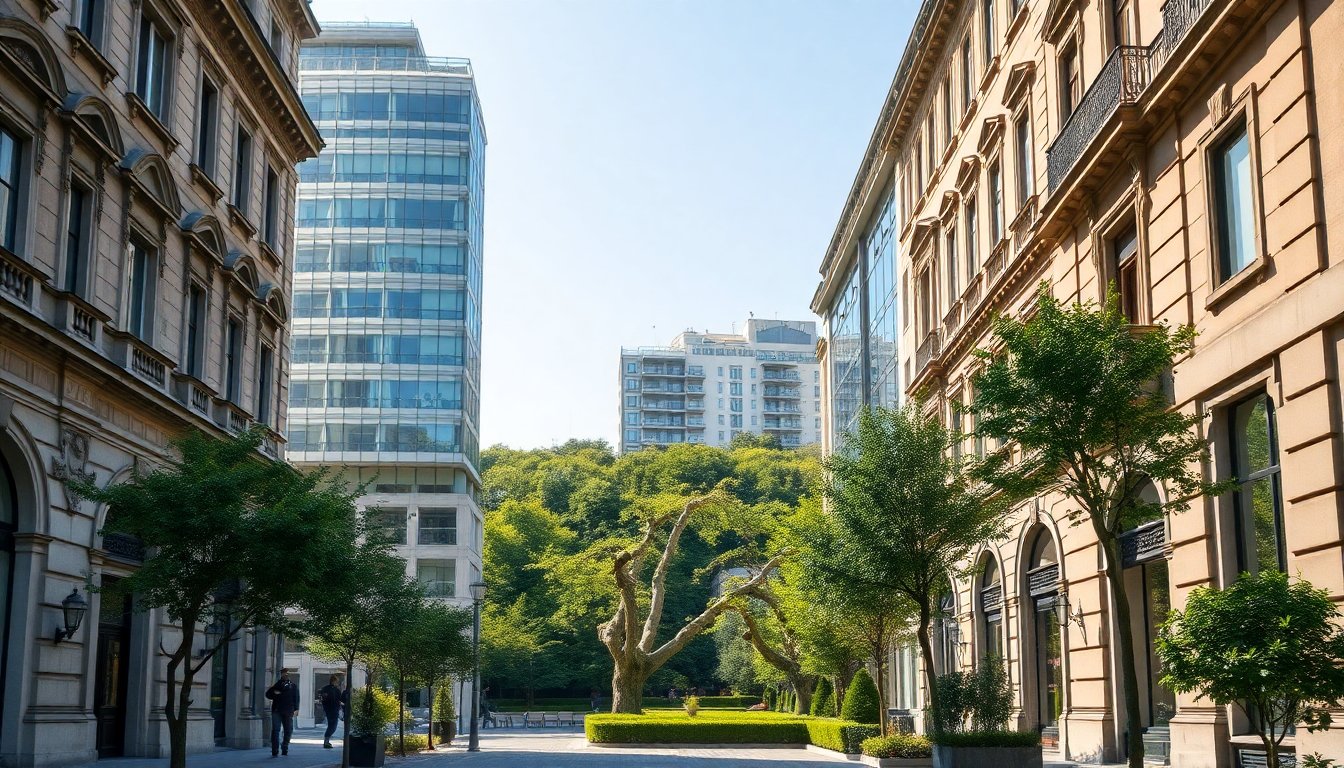Table of Contents
The Shifting Landscape of Luxury Real Estate in Milan
The luxury real estate market in Milan is undergoing a significant transformation. Various factors are influencing both demand and supply. As an industry expert with over 20 years of experience, I can assert that the principle of location remains paramount. Changes in buyer preferences, especially in the post-pandemic era, are redefining property investment in this iconic city.
Market Overview: Insights from OMI and Nomisma
Recent data from OMI and Nomisma reveal a notable recovery in luxury property transactions. In 2025, Milan’s real estate market is witnessing a resurgence as affluent buyers target prime locations that blend lifestyle with investment opportunities. The statistics show a consistent rise in average prices per square meter, particularly in sought-after neighborhoods such as Brera, CityLife, and Porta Venezia. For example, the average price in Brera has increased by nearly 15% compared to the previous year, underscoring its appeal and the impact of ongoing urban revitalization projects.
In the luxury real estate market, resilience against economic fluctuations is notable. High-net-worth individuals consistently regard real estate as a stable investment option. Recent data from Tecnocasa indicates that despite external economic pressures, the demand for high-end properties remains strong. Buyers are becoming increasingly discerning, concentrating on properties that offer high returns on investment (ROI) and long-term value appreciation.
Analyzing Key Areas and Property Types
In evaluating promising investment areas, the importance of emerging neighborhoods cannot be overstated. Areas such as Navigli are undergoing significant transformations, drawing in younger professionals and creatives in search of a vibrant community. This demographic shift is generating new opportunities for investors willing to respond to evolving demands. Luxury apartments featuring modern amenities and sustainable attributes are particularly attractive in this context.
Conversely, traditional luxury locations such as the historic city center and the upscale neighborhoods of San Babila and Montenapoleone continue to demand high prices. In these areas, the emphasis remains on preserving historical value while incorporating modern comforts. Properties with strong cash flow potential, including short-term rental options, are increasingly appealing to investors.
Price Trends and Investment Opportunities
Current pricing trends reveal a significant upward movement, particularly for properties that exemplify exclusivity and sophistication. According to data from Scenari Immobiliari, there is a consistent rise in demand for penthouses and villas featuring terraces, which have become particularly desirable in the post-COVID era. This trend reflects not just luxury but indicates a broader shift in how individuals view their living spaces in a more digital world.
Investors should prioritize properties that align with current market demands while also showcasing growth potential. For example, developments emphasizing eco-friendly construction and smart home technologies resonate with a market increasingly focused on sustainability. Additionally, comprehending the cap rate is vital for assessing the profitability of investments. A detailed analysis of comparable properties in the vicinity can yield insights into potential cash flow and return on investment (ROI).
Practical Tips for Buyers and Investors
Navigating the luxury real estate market requires thorough research. Understanding market dynamics and regional trends equips buyers with the knowledge necessary for informed decision-making. Furthermore, networking with local real estate professionals can uncover valuable insights that are not typically available in public data.
Investors should adopt a long-term perspective when entering the luxury real estate market. The sector can experience significant volatility, and a well-thought-out strategy is essential to navigate fluctuations effectively. Engaging professional services for property management and market analysis can greatly enhance the investment experience and improve overall returns.
Medium-Term Forecasts
The luxury real estate market in Milan is expected to witness sustained growth in the coming years. As the economy recovers and foreign investment increases, demand for properties is likely to rise. Areas that have been historically undervalued may emerge as the next hotspots due to ongoing urban development.
In summary, Milan’s luxury real estate market represents more than just affluence; it is a vibrant landscape filled with opportunities for informed investors. Location is everything in this sector. By targeting prime areas, staying abreast of market trends, and employing a well-thought-out investment strategy, investors can effectively navigate this appealing market.


